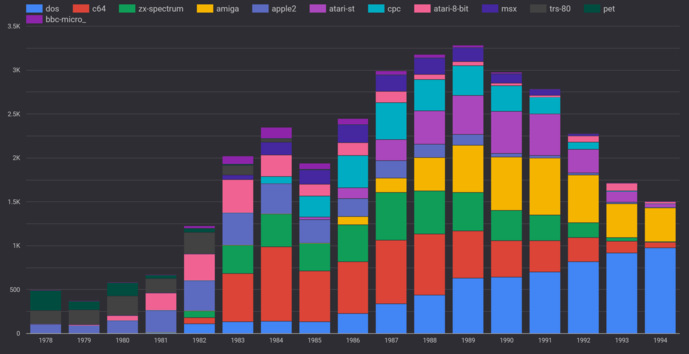Brief History of Computer Games and Platforms - Part 1: 1977-1982
The first of a series of articles about the history of computer games
![]() By: E. Bolognesi
By: E. Bolognesi
Published: 12 September 2019, 5:19 pm
If you own a computer today, it's either a PC or a Mac. Instead, not too many years ago, the world was full of crazy, tiny - and marvelous - machines called home computers. They had fancy names such as Apple II, Commodore 64, ZX Spectrum, Atari 800, BBC Micro, Amiga, Atari ST, and more. It was the golden age of 8-bit and 16-bit technology.
As an amateur historian of computer games, I find it fascinating that in the '80s and part of the '90s, companies were developing their titles for so many different platforms. For example, take Lode Runner - it was initially released for Apple II, Atari-8 bit, Commodore 64, Vic-20, and IBM-PC. Then it was ported to ZX Spectrum, MSX, BBC Micro, Amstrad CPC, Atari ST, and Amiga. Ultima IV was released for Amiga, Atari 8-bit, Atari ST, C64, DOS, MSX, and the Japanese computers FM-7, FM-Towns, PC-88, PC-98, Sharp X1, and X68000.
Consider that porting a C64 game to ZX Spectrum is not like converting a game from PC to Mac. Each of those computers was different from the others, so the game had to be re-designed and programmed from scratch in most cases. Game developers must have had a lot of fun at the time.
To have an idea of the heterogeneity, have a look at the chart below. It shows, year by year, the number of games released for each computer platform in the pre-Windows era. A lot of colors, right? It means plenty of titles for many different platforms. Some platforms received a lot of games, some very few. Some of the machines were very relevant during a specific period, then they gradually disappeared.

In retrospect, not all home computers had the same impact on the gaming industry. Which ones were the main target of game developers? Which ones gave birth to the best titles? In short, which ones made the history of computer games?
These are some of the questions that I'll try to answer in this series of articles. Of course, while we talk about the machines, we will have to talk about the games that have been created for them and, most importantly, the brilliant minds behind them.
The numbers and the charts you will find in this article are possible thanks to a fantastic website called mobygames.com, the oldest, largest, and most accurate video game database.
This Part 1 will cover the first years of the history of the home computers and computer games, from 1977 to 1982.
To make reading the story more accessible, I split the article into different years. Start from the beginning, or feel free to go straight to your favorite year:
1977: The year of the Trinity 1978/1979: The first computer games 1980: The rise of the TRS-80 and the Apple II 1981: The Apple II influence continues 1982: Transition to the next generation of 8-bit